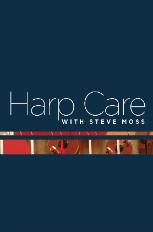 Does your pedal harp need regulation once a year? Every other year? Only occasionally? The answer, of course, is “it depends.” It depends on how much you play your harp, how strongly you play, and how high your standards are for sound and intonation.
Does your pedal harp need regulation once a year? Every other year? Only occasionally? The answer, of course, is “it depends.” It depends on how much you play your harp, how strongly you play, and how high your standards are for sound and intonation.
What causes a harp to go out of regulation? Time and use. Over time, the pedal felts become compacted where your pedals rest against the notches in the base. Under continuous string pressure (close to 2,000 pounds on a full-sized pedal harp), the soundboard pulls up slowly and the neck twists slightly. As the harp is played, constant vibration can cause parts to work slightly loose, resulting in noises you didn’t hear before. As parts age, some can lose their initial strength and require adjustment to function properly. Frequent use and moving can also result in breakage to fragile action parts, accidental movement, and other minor hassles.
As a harp gradually goes out of regulation, it gradually loses playability. The strings will start to snap against the discs instead of being held firmly in place. The sharp pitches will start to sound out of tune. How quickly you notice these changes depends, again, on how you play and your tolerance for and sensitivity to pitch issues. Professional harpists tend to have their harps regulated more frequently because they are the first to notice losses in the harp’s playability. Students and casual players, on the other hand, may not notice a loss in performance for a longer period of time if they play with a softer touch.
The the losses in playability that a harp experiences tend to begin at the extremes of its range. In the top octaves, the intonation is most sensitive to any change in the discs or string condition. In the bass wires, the changes in disc rotation that happen as the felts compact are more pronounced. For this reason, too, more experienced harpists who use the entire harp will notice problems more quickly than newer players who work mostly in the harp’s mid-range.
So, what does this all mean? If you are a professional, harp major, or otherwise frequent player with a strong playing style, consider having your harp regulated every year, or at least every other year. If you just play for fun, every two or three years is fine. You may go even longer before noticing problems, but I recommend seeing a technician on some kind of regular schedule so that he or she can help spot and avoid larger problems before they become an emergency.


0 Comments